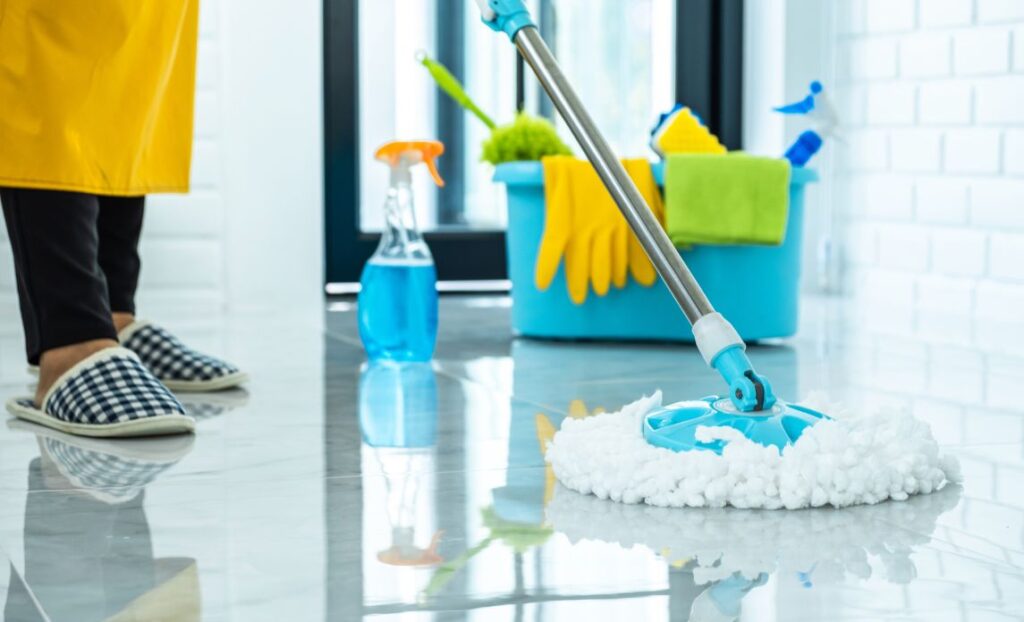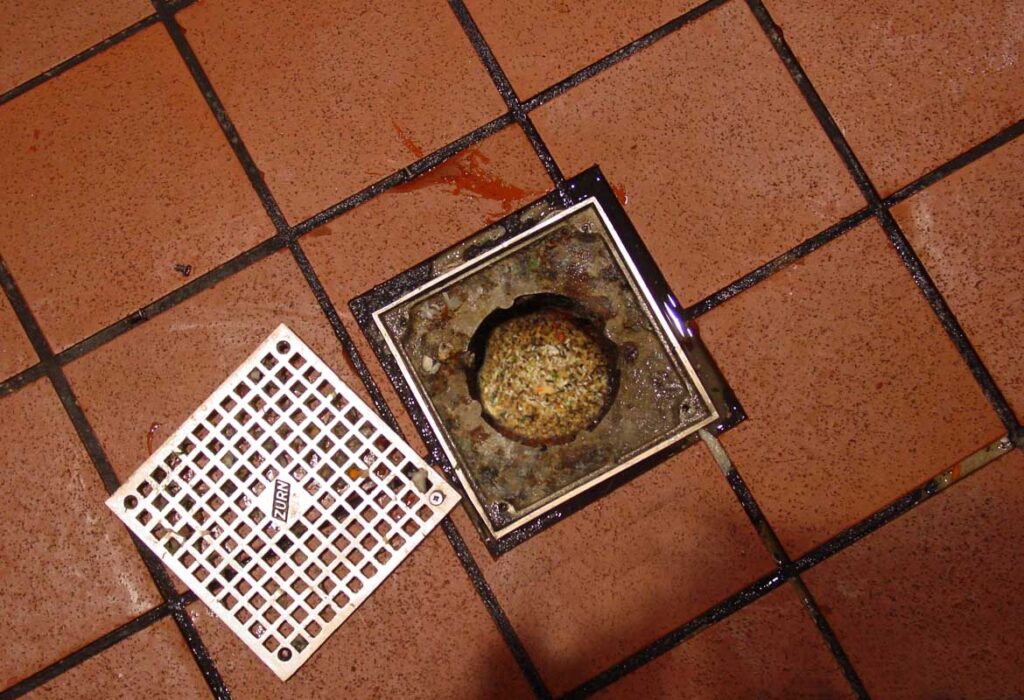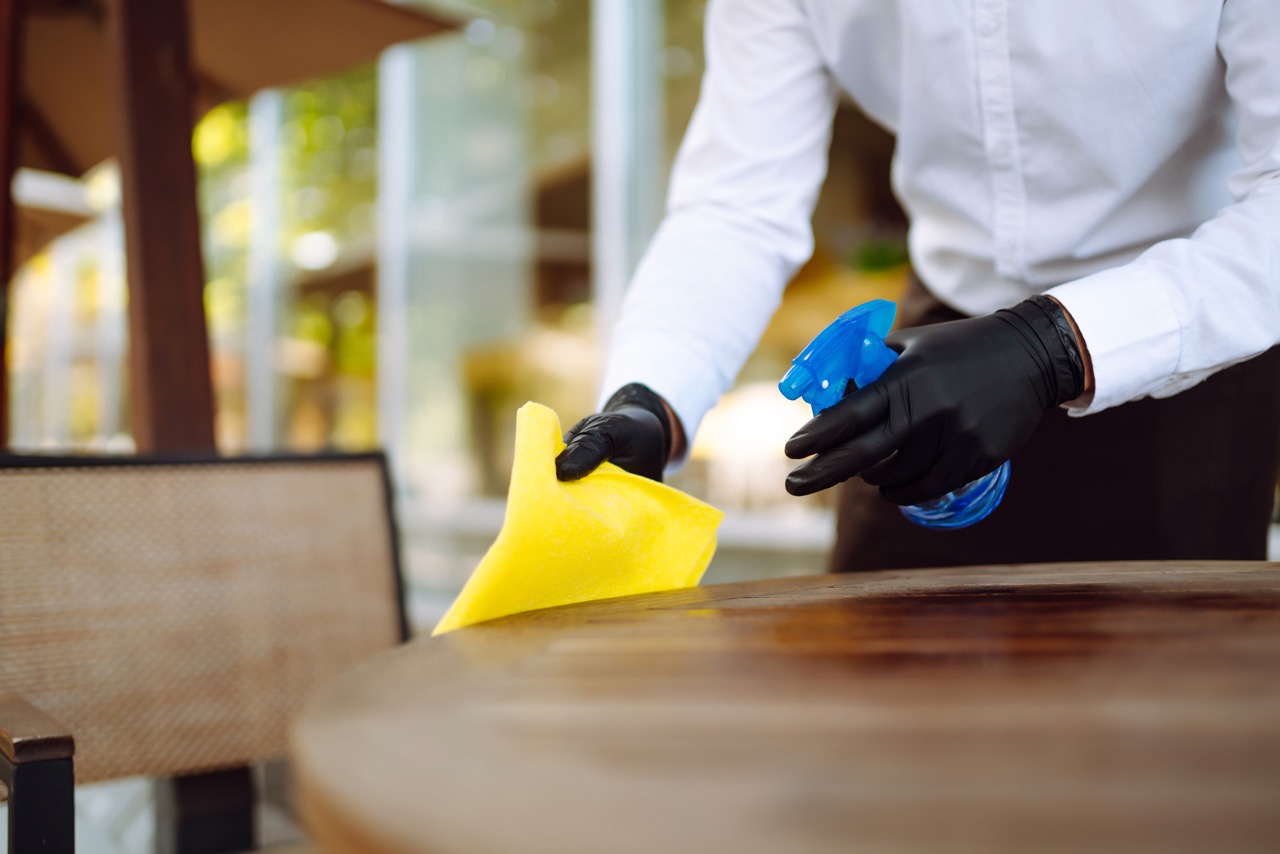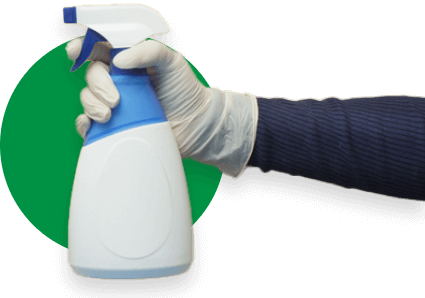Maintaining a clean restaurant is crucial for ensuring food safety and creating a welcoming environment for guests. According to one 2016 survey, customers revealed that 72% would only return to a restaurant if its floors were clean.
A clean restaurant complies with health regulations and reflects a commitment to quality. Whether removing grease from a commercial kitchen floor or ensuring the cleanliness of floor drains, each cleaning step is vital for a hygienic, well-maintained space.
Embrace these practices to uphold your restaurant to the highest clean standards.
Importance of Clean Restaurant Surfaces
Clean restaurant surfaces are key to customer satisfaction and health and safety regulations compliance. A spotless environment boosts customer confidence and ensures adherence to hygiene standards crucial in commercial kitchens.
Regularly cleaning restaurant floors, kitchen areas, and ceiling tiles reduces health risks. Methods like removing grease from kitchen floors and maintaining floor drains are essential.
These steps elevate a restaurant’s reputation and are fundamental in providing a safe, appealing dining experience. A clean restaurant is the cornerstone of culinary excellence and customer trust.

How to Clean Restaurant Floors
Clean floors are fundamental for safety, hygiene, and overall appearance. Regular and thorough cleaning of restaurant floors enhances customer impressions and prevents accidents like slips and falls.
Daily floor maintenance in commercial kitchens and dining areas should include sweeping to remove debris and mopping with a suitable cleaning solution to tackle spills and stains.
When it comes to deep cleaning, focus on removing stubborn grime and grease, especially in high-traffic zones. This should be carried out by commercial floor cleaners.
This might involve using specialized cleaning agents and scrubbing with more robust equipment. Pay special attention to areas beneath tables and around kitchen appliances.
Also, periodic maintenance of restaurant floor drains is crucial to prevent blockages and maintain sanitation.

Cleaning Ceiling Tiles in the Restaurant
While you may not think to clean your ceiling, ceiling tiles are crucial in maintaining your restaurant’s overall hygiene and aesthetics. Over time, ceiling tiles can accumulate dust, grease, and other airborne contaminants, especially in commercial kitchens. Here’s how to clean ceiling tiles in the restaurant:
- Preparation: Safely set up a stable ladder or scaffolding to reach the ceiling tiles. Ensure adequate ventilation in the area.
- Dusting: Gently dust the ceiling tiles using a soft-bristled brush or a duster. This removes loose dirt and debris, preparing the tiles for a deeper clean.
- Cleaning Solution: Mix a mild detergent with warm water. To remove grease in kitchen areas, you may need a stronger degreaser.
- Gentle Scrubbing: Gently scrub the ceiling tiles using a soft sponge or cloth. Be cautious to avoid saturating the tiles with water.
- Rinsing and Drying: Wipe the tiles with a damp cloth to remove any soap residue, then dry them with a clean cloth to prevent moisture damage.

Cleaning a Greasy Restaurant Kitchen Floor
The National Floor Safety Institute (NFSI) states that 85% of workers’ compensation claims are due to employees slipping on slippery floors, making it the most common type of accident in commercial kitchens.
A greasy kitchen floor in a restaurant is a safety hazard and a cleanliness concern. To tackle this, follow these steps on how to clean a restaurant kitchen floor:
- Remove Loose Debris: Begin by sweeping or vacuuming to clear any loose dirt and debris.
- Apply Grease Removal Cleaning Solution: Use a commercial-grade degreaser specially formulated to clean a restaurant kitchen floor.
- Scrubbing: Scrub the floor with a stiff-bristled brush to break down the grease.
- Rinsing: Rinse the floor thoroughly with hot water to remove all traces of the degreaser and loosened grease.
- Drying: Dry the floor completely to prevent slips and ensure it’s ready for use.
Cleaning Restaurant Floor Drains
Keeping floor drains clean in a restaurant is essential for hygiene and preventing clogs that can lead to unsanitary conditions. Regular maintenance of floor drains is critical to overall cleanliness, especially in commercial kitchens. Here’s how to clean restaurant floor drains:
- Regular Flushing: Flush drains regularly with hot water to prevent buildup.
- Manual Cleaning: Periodically, remove any visible debris manually.
- Use of Enzymatic Cleaners: Enzymatic cleaners break down grease and organic matter, which is crucial for grease removal.
- Inspect for Clogs: Regularly inspect and clear any blockages to ensure smooth drainage.

Elevate Your Restaurant’s Appeal with Our Expert Cleaning Services
Knowing how to clean a restaurant’s kitchen floor is key to success. By regularly cleaning their floors, restaurants prevent hazards and enhance customer experiences. Tackling greasy restaurant kitchen floors with specific grease removal techniques ensures safety and hygiene.
Clean ceiling tiles improve overall restaurant cleanliness. Remember, maintaining restaurant floor drains is crucial for a sanitary environment.
These practices are non-negotiable for a safe, appealing dining space in commercial kitchens. Adopt these regular cleaning routines to uphold your restaurant’s standards.
Ready to elevate your restaurant’s cleanliness? Take the first step with Dallas Janitorial, your partner in maintaining a pristine, inviting establishment.

Frequently Asked Questions
What is the best way to clean restaurant floors?
Start with sweeping or dry mopping to remove debris. Then, apply a suitable floor cleaner or degreaser with a mop or floor scrubber for thorough cleaning.
What do professionals clean floors with?
Professionals typically use commercial-grade cleaning solutions and equipment. A good example is the 3M™ Easy Clean Disposable Floor Mop pads. They work both wet and dry. They clean up twice as much tough dirt and stains as microfiber and dry 60% quicker than traditional string mops, giving you a cleaner floor in less time.
How do you clean sticky restaurant floors?
First, sweep or vacuum to remove debris. Then, mop using warm water and a mild detergent or floor cleaner. For more stubborn stickiness, incorporating a degreaser can be effective.
How do I make my commercial floor shine?
To make commercial floors shine, maintain a consistent cleaning routine using the right cleaning products. After cleaning, use a high-quality floor polish or wax designed for commercial use. Regular buffing can also help maintain a glossy appearance.
How to clean a greasy restaurant kitchen floor?
Start with sweeping or dry mopping. Then, apply a degreaser or a mixture of warm water and a grease-cutting detergent. Scrub the floor with a brush or floor scrubber and finish with a thorough rinse to remove any cleaning residue. That’s how to clean a greasy restaurant kitchen floor.







